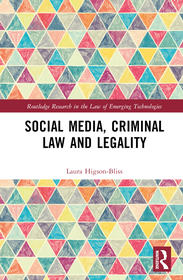
The Economy of Roman Religion
Series: Oxford Studies on the Roman Economy;
- Publisher's listprice GBP 88.00
-
42 042 Ft (40 040 Ft + 5% VAT)
The price is estimated because at the time of ordering we do not know what conversion rates will apply to HUF / product currency when the book arrives. In case HUF is weaker, the price increases slightly, in case HUF is stronger, the price goes lower slightly.
- Discount 10% (cc. 4 204 Ft off)
- Discounted price 37 838 Ft (36 036 Ft + 5% VAT)
Subcribe now and take benefit of a favourable price.
Subscribe
42 042 Ft

Availability
Estimated delivery time: In stock at the publisher, but not at Prospero's office. Delivery time approx. 3-5 weeks.
Not in stock at Prospero.
Why don't you give exact delivery time?
Delivery time is estimated on our previous experiences. We give estimations only, because we order from outside Hungary, and the delivery time mainly depends on how quickly the publisher supplies the book. Faster or slower deliveries both happen, but we do our best to supply as quickly as possible.
Product details:
- Publisher OUP Oxford
- Date of Publication 22 June 2023
- ISBN 9780192883537
- Binding Hardback
- No. of pages376 pages
- Size 240x158x23 mm
- Weight 768 g
- Language English 562
Categories
Short description:
This interdisciplinary edited volume presents twelve papers by Roman historians and archaeologists, discussing the interconnected relationship between religion and the Roman economy over the period c. 500 BC to AD 350.
MoreLong description:
This interdisciplinary edited volume presents twelve papers by Roman historians and archaeologists, discussing the interconnected relationship between religion and the Roman economy over the period c. 500 BC to AD 350.
The connection between Roman religion and the economy has largely been ignored in work on the Roman economy, but this volume explores the many complex ways in which economic and religious thinking and activities were interwoven, from individuals to institutions. The broad geographic and chronological scope of the volume engages with a notable variety of evidence: epigraphic, archaeological, historical, papyrological, and zooarchaeological. In addition to providing case studies that draw from the rich archaeological, documentary, and epigraphic evidence, the volume also explores the different and sometimes divergent pictures offered by these sources (from discrepancies in the cost of religious buildings, to the tensions between piety and ostentatious donation). The edited collection thus bridges economic, social, and religious themes.
The volume provides a view of a society in which religion had a central role in economic activity on an institutional to individual scale. The volume allows an evaluation of impact of that activity from both financial and social viewpoints, providing a new perspective on Roman religion - a perspective to which a wide range of archaeological and documentary evidence, from animal bone to coins and building costs, has contributed. As a result, this volume not only provides new information on the economy of Roman religion: it also proposes new ways of looking at existing bodies of evidence.
In many ways the economic activity of Roman religious sites was remarkably like that of those of the Christian church. Discounting the advent of doctrinal orthodoxy and greater control from the centre, there appear to be almost no ways of spending or acquiring money in the medieval church which were not known or practiced in the Roman period. As the authors say, this subject will benefit from a great deal of additional attention, and at some point a book of great interest to the general reader will undoubtedly emerge. Given the quality and approachability of their scholarship, these contributors have undoubtedly provided some of the essential building blocks for such a work.
Table of Contents:
Introduction: Religion and the Roman economy
What did Religion Cost in Ancient Rome?
Investing in Religion: Religion and the Economy in pre-Roman Central Italy
Cost Differences in Temple Building between Rome and the Provinces
Moneychangers in the Temple? Coins and Religion in the Roman World
Cult Economy in the Eastern Provinces of the Roman Empire
Impact of the Roman Conquest on Temple Economies in Egypt: A Case Study of the Temple of Soknopaios in Dime
Animals in Roman Religion: The Economics behind the Rituals
Sacred flocks and herds? The Implications of Animal Sacrifice at Rural and Suburban Romano-Celtic Shrines
Sacred Gifts, Profane Uses? The Limits of Donations in the Roman Religious Sphere
Guilds and Gods: Religious Profiles of Occupational collegia and the Problem of the dendrophori
Current and Future Directions of the Study of Roman Religion and Economy







